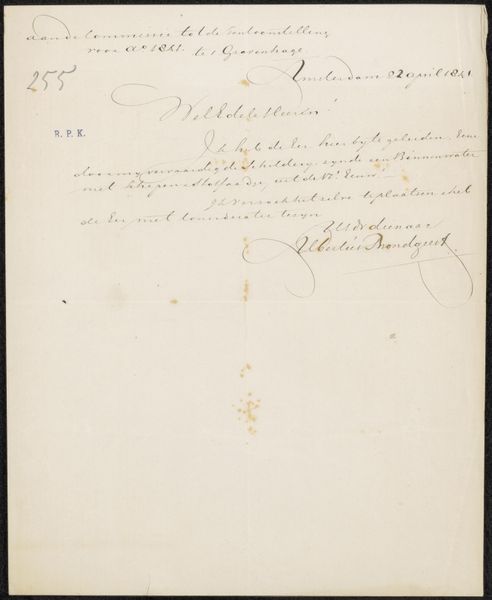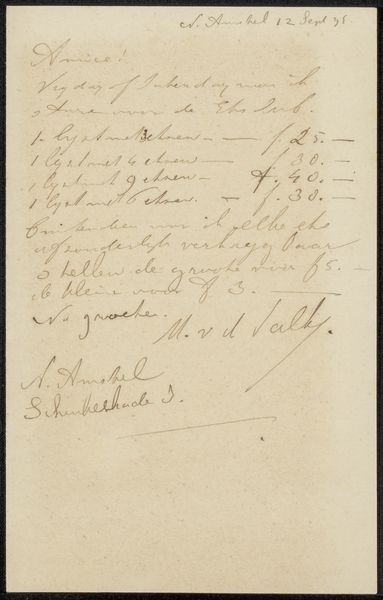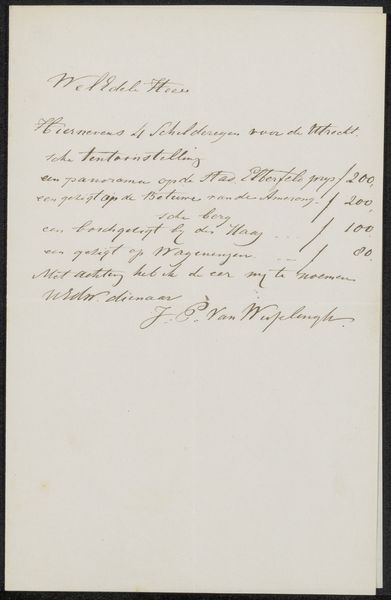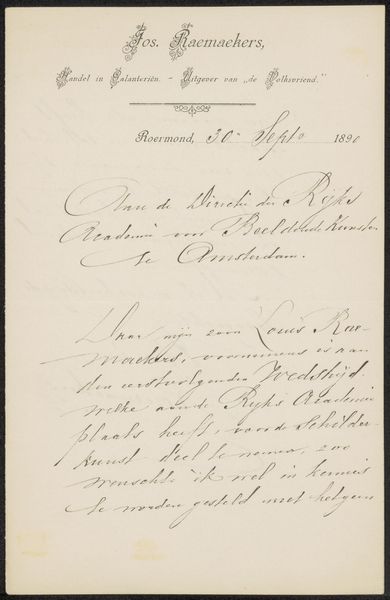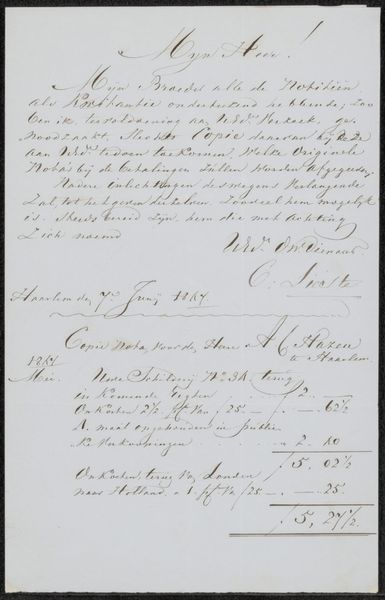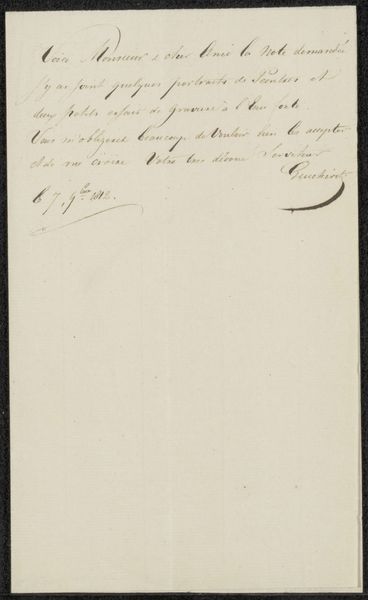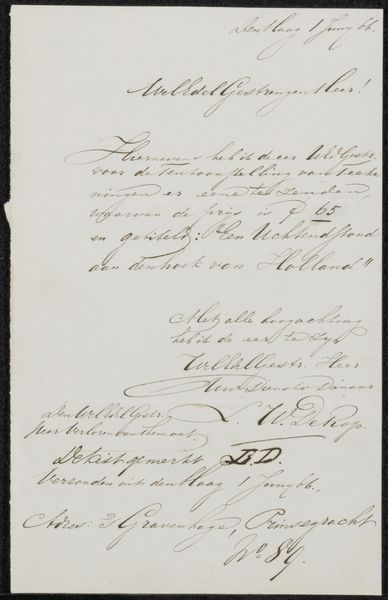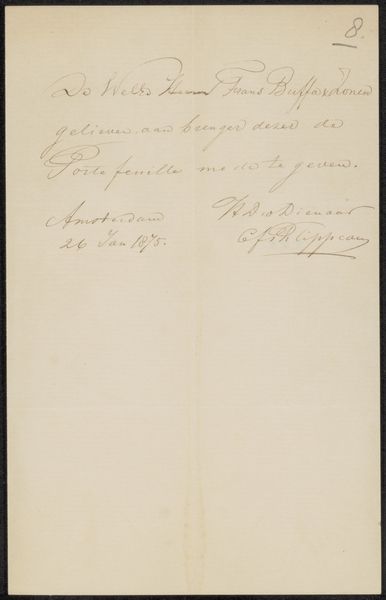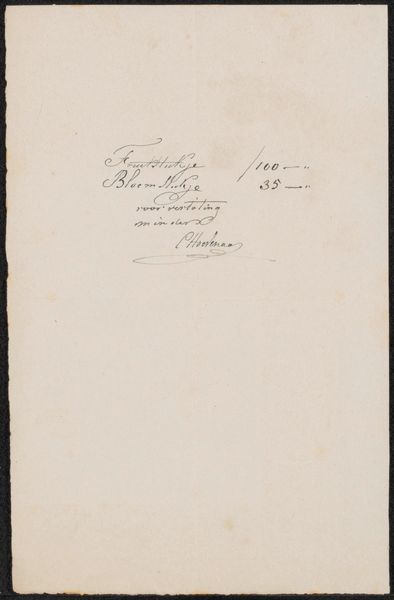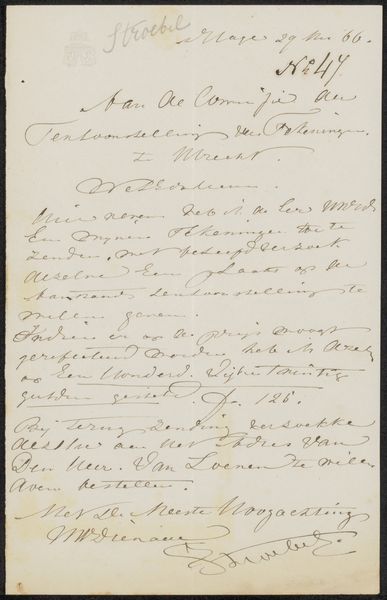
drawing, paper, ink
#
portrait
#
drawing
#
landscape
#
paper
#
ink
#
calligraphy
Copyright: Rijks Museum: Open Domain
Editor: This drawing, *Rekening voor de heer Verveer en Huib van Hove Bz,* made between 1824 and 1864, is an anonymous piece using ink on paper. It appears to be a receipt of some sort, but the elegant calligraphy feels more artistic than functional. How should we interpret this from a modern perspective? Curator: I see it as a document that speaks volumes about labor, class, and the hidden economies of the art world. Receipts are rarely considered art, but this challenges that notion. The very act of documenting expenses—'office furniture,' 'one letter'—highlights the infrastructure required for artistic production. Editor: So, it's a behind-the-scenes look at the economic reality of art creation? Curator: Precisely. Whose labor are we not seeing represented? Who is 'Monsieur Détaillart' at the Hotel Valois? What kind of social interactions took place here, between patron and artist, client and service provider? The beauty of the calligraphy is offset by the mundane reality of the transaction. What does that tension tell us about power and representation? Editor: It’s easy to overlook these aspects, focusing instead on the final artwork. Considering the receipt in this context, I'm reminded of the social complexities within even seemingly straightforward artistic exchanges. Curator: Exactly. It pushes us to ask: what were the political and social contexts shaping artistic production in that period, and how does it reflect, or subvert, them? Editor: I hadn't considered the receipt itself as a form of social commentary. It’s changed my view quite a bit! Curator: Mine, as well. I didn't imagine this piece as speaking to this, so directly.
Comments
No comments
Be the first to comment and join the conversation on the ultimate creative platform.



